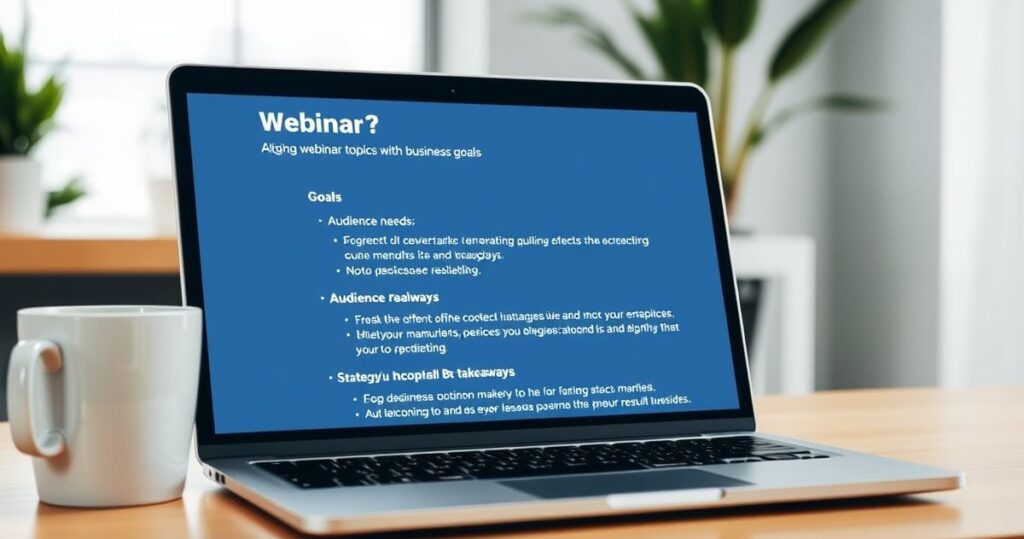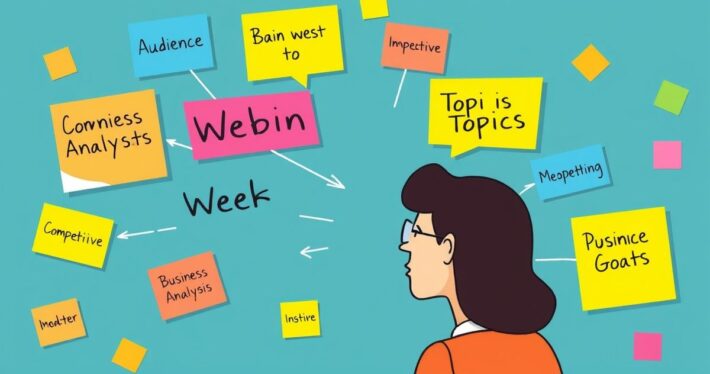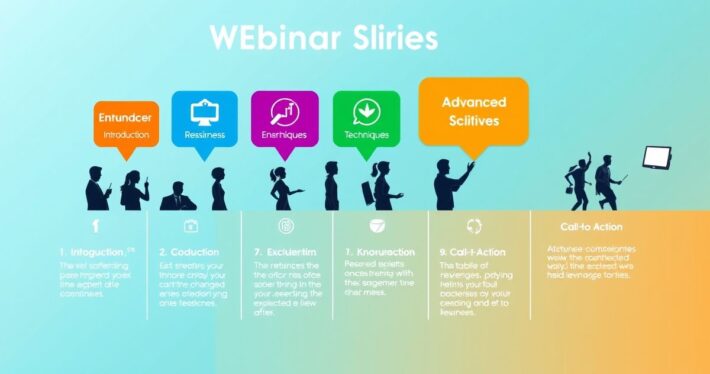How to Align Webinar Topics with Your Business Goals

Webinars have become one of the most powerful tools for businesses to educate, engage, and convert their audiences. But here’s the million-dollar question: Are your webinar topics truly aligned with your business goals? Let’s be honest—many businesses host webinars without a clear strategy, resulting in wasted time and missed opportunities. The key to creating high-converting webinars lies in aligning your topics with your business objectives. And with AI-powered webinar tools, this process has never been easier or more effective.
Why Alignment Matters: The Foundation of a Successful Webinar
Think of your webinar as a bridge between your audience’s needs and your business goals. If the topic isn’t relevant to your audience, they won’t show up. If it doesn’t align with your goals, you won’t see the results you’re after. It’s like throwing a party without a guest list or a theme—chaos, right?
For example, if your goal is to increase sales for a new product, your webinar topic should focus on solving a specific problem that product addresses. If your goal is to grow your email list, your topic should offer irresistible value in exchange for sign-ups. Alignment is everything.
Step 1: Define Your Business Goals (Be Specific!)
Before you even think about topics, you need to clarify your business goals. Are you looking to:
- Increase sales?
- Build brand awareness?
- Generate leads?
- Educate your audience?
Let’s say your goal is to increase sales. Great! Now, get specific. What product or service are you promoting? What’s the average order value? How many sales do you need to hit your target? This level of detail will guide your topic selection.
Step 2: Know Your Audience Inside and Out
Your business goals are only one piece of the puzzle. The other? Your audience. You need to understand their pain points, desires, and challenges. Here’s where many businesses fall short—they assume they know their audience without doing the research.
Pro tip: Use surveys, interviews, and data analytics to uncover what your audience truly cares about. For instance, if you’re in the fitness industry, you might discover that your audience is struggling with staying consistent rather than just losing weight. Boom—now you’ve got a topic that hits home.
Step 3: Bridge the Gap Between Goals and Audience Needs
This is where the magic happens. You need to find the sweet spot where your business goals overlap with your audience’s needs. Let’s say your goal is to sell a $1,000 online course on digital marketing, and your audience is struggling with generating leads.
Your webinar topic? “The Ultimate Lead Generation Blueprint: How to Attract and Convert High-Quality Leads in 30 Days.” This topic aligns perfectly with both your goal (selling the course) and your audience’s need (learning how to generate leads).
Step 4: Use AI-Powered Tools to Streamline the Process
Now, here’s where it gets interesting. With AI-powered webinar tools, aligning topics with goals doesn’t have to be a guessing game. Tools like Slide Outline Creator help you structure content that balances education and engagement. The Webinar Offer Builder helps you craft irresistible offers that drive conversions.
Let’s break it down with an example:
- Slide Outline Creator: Struggling to structure your webinar content? This tool helps you create a clear, compelling flow that keeps attendees engaged while subtly guiding them toward your offer.
- Webinar Offer Builder: This tool ensures your offer is positioned as the obvious next step. It helps you structure pricing, stack value, and create urgency—all tailored to your business goals.
- High-Value Bonus Brainstormer: Offering bonuses can skyrocket your conversion rates. This tool generates unique, high-value bonuses that make your offer impossible to resist.
- Risk-Reversal/Guarantee Generator: Worried about objections? This tool creates guarantees that make saying “yes” safer than saying “no.”
Real-World Example: How a SaaS Company Aligned Their Webinar for $50K in Sales
Let’s take a real-world example to illustrate this process. A SaaS company wanted to increase sales for their project management software. Their goal was clear: generate $50,000 in sales within 30 days.
Here’s how they aligned their webinar topic:
- Business Goal: $50K in software sales.
- Audience Need: Clients struggled with team collaboration and missed deadlines.
- Webinar Topic: “The Ultimate Guide to Streamlining Team Collaboration and Hitting Deadlines Every Time.”
They used the Slide Outline Creator to structure their content, the Webinar Offer Builder to craft a compelling offer, and the High-Value Bonus Brainstormer to include free templates and a training session. The result? $52,000 in sales within 30 days.
Step 5: Test, Analyze, and Optimize
Even with the best alignment, there’s always room for improvement. Use analytics to track metrics like attendance rates, engagement levels, and conversion rates. Didn’t hit your sales target? Maybe your offer wasn’t clear enough. Low attendance? Perhaps your topic didn’t resonate.
The beauty of AI-powered tools is that they make optimization easier. You can tweak your content, offers, and bonuses based on real data—ensuring every webinar gets better than the last.
Common Pitfalls to Avoid
- Being Too Salesy: A webinar should educate first and sell second. If it feels like a hard sell, you’ll lose your audience.
- Ignoring Audience Feedback: Your audience’s feedback is gold. Don’t dismiss it.
- Choosing Broad Topics: Niche topics convert better than generic ones. Be specific.
Final Thoughts: Aligning Webinar Topics Is Both an Art and a Science
Aligning webinar topics with your business goals isn’t just about picking a catchy title. It’s about understanding your audience, defining clear objectives, and using the right tools to bridge the gap. With AI-powered webinar tools, this process becomes seamless—allowing you to focus on what really matters: delivering value and driving results.
So, ready to align your next webinar with your business goals? Start by defining your goals, understanding your audience, and leveraging the power of AI tools. The results might just surprise you.



